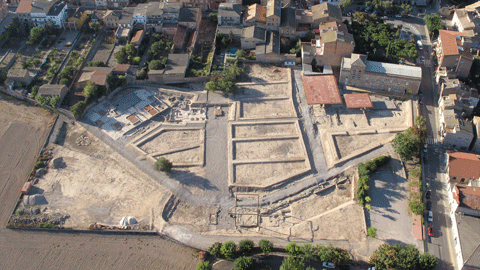UAB Archaeology Campus to be created at Guissona

22/04/2016
Ferran Sancho, Rector of the UAB, and Xavier Casoliva, Mayor of Guissona, will sign on Monday 25 April a collaboration agreement to create the new UAB Archaeology Campus within the Roman site of Iesso - Guissona Archaeological Park.
The campus will occupy an area of two hectares belonging to the urban space of the Roman site of Iesso (1st century BC to 5th century AD). This space has been studied by UAB researchers since 1990, a task which has led to uncovering part of the northern wall of the Roman city, a defence tower, the northern gate to the city, a group of houses which include a domus from the Imperial era and an ancient cellar, as well as thermal baths.
The Universitat Autònoma de Barcelona collaborates with the City Council of Guissona in the field of archaeological research and teaching since 1988, thanks to its bachelor's degrees in History and Archaeology. This collaboration was institutionalised in 1995 with the integration of Universitat Autònoma de Barcelona into the consortium of the "Patronat d'Arqueologia de Guissona", presently still made up by the UAB, the Guissona City Council and other institutions. The Roman site of Iesso has been used each year as a place to conduct practical sessions and continues to do the same as part of the UAB's Archaeology degree, inter-university master's degree in Classical Archaeology and its PhD programme in Classical Archaeology.
The creation of a UAB Archaeology Campus in Guissona will facilitate scientific research and development in the field of archaeology and heritage, and will be an essential tool for the training of students. It will also serve to promote the region's archaeological heritage thanks to the dissemination of scientific results to academics and to the general public, thus contributing to making the Archaeological Park of the Roman site of Iesso a leading centre in several fields.